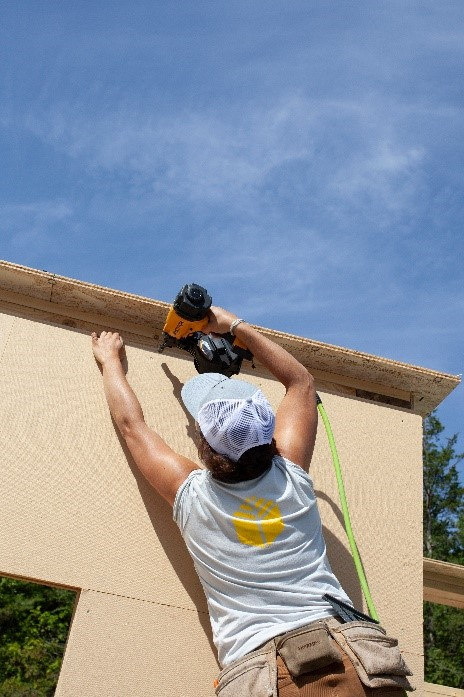Every building is responsible for two main types of carbon emissions: operational carbon and upfront carbon. Operational carbon emissions come from the energy used to operate a building after it’s built. Upfront carbon emissions, or embodied carbon, includes the emissions created from harvesting materials, manufacturing, transportation, installation, maintenance, and construction of a building.
It is estimated that the upfront carbon from new building will be responsible for almost half of the carbon emissions of all new construction buildings between now and 2050.1 Unlike operational carbon, there is no opportunity to decrease embodied carbon with updates in efficiency after the building is constructed.
It is crucial for building professionals and policymakers to account for both operational and upfront carbon emissions to fully address the carbon footprint of buildings, however, in Massachusetts, existing building-related climate policies have primarily focused solely on operational carbon.
The first step in creating holistic approaches that address the upfront carbon of building materials is to collect data on the range of construction materials and their associated emissions.

What is MassCEC doing?
MassCEC is providing a $200,000 grant to the non-profit trade group, the Northeast Home Energy Rating System Alliance (NEHERS). NEHERS will use the grant to link Ekotrope2, a HERS Rating software system that calculates operational emissions and is required for all new homes in Massachusetts, to the Building Emissions Accounting for Materials (BEAM)3 software system that calculates embodied emissions, to allow the calculation of both metrics simultaneously.
The grant also provides funding for NEHERS to gather data on the upfront carbon of 100 homes in Massachusetts . This data will help policymakers and design professionals understand the amount of embodied carbon and design policy to address reductions in upfront carbon.
The software integration for this project will be available for use in summer 2024.